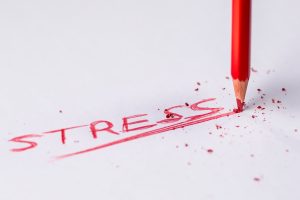Analyzing Short Story Setting, Characters, and Point of View
When analyzing a short story, it is important to take a closer look at its setting, characters, and point of view. Paying attention to these three aspects of the story can help you to better understand the overall meaning.
Setting
The setting of a story is the time, place, and environment in which it occurs. It has a huge impact on the plot and the events that take place in the story. Paying attention to the setting can provide you with insight into the characters and their motivations. Also, keep an eye out for any changes in the setting that might have an effect on the story’s progression.
Characters
The characters of a story are the people and creatures that take part in the action. What kind of people are they? How do their backgrounds influence their decision-making? What motivates them? It’s important to consider these questions when analyzing the characters of a short story.
Point of View
In literature, point of view is the perspective from which a narrative is told. It is often determined by the character who is narrating the story. Paying attention to the point of view can provide insight into how the story is being interpreted. Also, be aware of any shifts in the point of view that might take place during the course of the story.
By keeping an eye on the setting, characters, and point of view in a short story, readers can gain a better understanding of its overall meaning. Analyzing these elements can reveal layers of meaning that might be otherwise overlooked.
Discussion of Theme
When it comes to analyzing the themes of a short story, the focus should be on how these themes are portrayed through the characters’ interactions and external conflicts. Understanding the point of view, setting, and other elements of the story are also important. By looking for recurring patterns or motifs in the story, we can often get an idea of what it is trying to say.
The main characters in the story are often a good starting point when looking for themes. It’s helpful to ask questions like: What motivates the main character? Does the character learn anything during the course of the story? How do their choices relate to the story’s theme? This can help us figure out the story’s main message.
External conflicts between characters can also be revealing. We can look at the various strategies the characters use to solve the problem and what the outcome is. This will give us an idea of what the writer is saying about the theme, and can help us gain further insight into the story’s meaning.
Recurring patterns and motifs in the story can also be telling. A motif is a symbol or event that shows up multiple times in the story, sometimes with subtle variations. When we examine how these symbols affect the story and the characters’ actions, we can gain a deeper understanding of the theme.
Analysing the theme of a short story can be challenging, but by looking for clues in the plot, settings, characters, and motifs, we can get a better understanding of the story’s core message. These tips will hopefully help readers analyze themes more confidently and accurately.
Examples of Symbolic Elements
When analyzing a short story, symbolic elements can be just as important as the plot and characters. Symbolic elements can include dreams, objects, and symbols that may have a deeper meaning than the literal interpretation. By recognizing and interpreting these symbols correctly, readers can gain further insight into a story’s overall message.
One of the most commonly used symbols in short stories is the dream. Dreams can often represent a protagonist’s innermost desires or fears, or convey a larger idea or theme. For example, in Edgar Allan Poe’s “The Raven”, the dream the narrator has is symbolic of his grief and longing for his lost love Lenore. In Charlotte Perkins Gilman’s “The Yellow Wallpaper”, the narrator’s dreams are a symbol of her mental decline, as the recurring image of a creeping woman is representative of her own deteriorating state of mind.
Objects can also be used to imply something more than what first meets the eye. In Ernest Hemingway’s “Hills Like White Elephants”, the railroad tracks that figuratively separate the two main characters are a metaphor for their relationship. The white elephant itself is a symbol of something precious and delicate that the couple can no longer seem to hold on to.
Symbols can also help to emphasize a particular point or theme. In William Faulkner’s “A Rose for Emily”, the rose that is left on Emily’s pillow is a symbol of Emily’s lost innocence and the town’s forgotten past. It is important to recognize and interpret these symbolic elements in order to gain a better understanding of the story as a whole.
By recognizing and interpreting symbolic elements, readers can gain additional insights into a short story’s themes and messages. Dream sequences, objects, and symbols are all powerful tools that can help to create a multifaceted narrative, and when read carefully, can offer much more than a straightforward story.
Conclusion
This guide has provided an overview of the process of analyzing a short story. We’ve discussed key components such as plot, setting, characters, point of view, theme, and symbolism. We’ve also covered the importance of preparation and how to recognize recurring patterns and motifs.
To summarize, the steps necessary for analyzing a short story are:
- Read the story multiple times and make notes.
- Research relevant background information about the author, time period, etc.
- Analyze the story’s plot structure, climax, and foreshadowing.
- Examine the setting, characters, and point of view in order to gain insight into the overall theme.
- Research and look for examples of symbolic elements, such as dreams and objects.
- Identify recurring patterns and motifs that could be related to the story’s theme.
By following these steps and using the additional resources provided, you should now have a good understanding of how to analyze a short story. With practice, you’ll be able to identify the deeper meanings behind stories and see things you may have missed before.
You Might Like:
Additional Resources for Short Story Analysis
For those who want to learn more about short story analysis, there are many useful resources available. From books to articles to online courses, these resources can provide valuable insights and help you become an expert in short story analysis.
Books are a great resource for exploring the fundamentals of short story analysis. They cover topics such as plot structure, characterization, symbolism, and theme in a detailed way. Some popular books include “The Art of Reading Stories” by David D. Adams, “The Elements of Fiction Writing” by Ansen Dibell, and “Story: Substance, Structure, Style, and The Principles of Screenwriting” by Robert McKee.
When it comes to online resources, there are plenty of websites offering advice on short story analysis. For example, the Writers Write website provides helpful articles on topics like how to analyze characters and how to find a story’s theme. There are also websites such as Story Grid and Now Novel that offer guided lessons on short story analysis.
Finally, if you want to get more formal education on the topic, there are online courses dedicated to short story analysis. Coursera offers the course “Analyzing Short Stories” which covers topics such as characterization, setting, and story structure. Another great course is “Short Story Analysis” by Harvard University on edX.
With all of these resources, you can easily learn everything you need to know about short story analysis. From introducing yourself to the basics to mastering the art of writing stories, you’ll be sure to gain the skills and knowledge necessary to become an expert in no time.
Exercises to Strengthen Short Story Analysis Skills
When it comes to analyzing short stories, practice makes perfect. Doing exercises is a great way to not only practice what you already know but also to expand your knowledge and develop better analytical skills. Here are some suggestions of exercises you can do to improve your short story analysis skills.
1. Read a Variety of Stories
Reading a broad range of short stories can provide deep insight into both the craft and the purpose of stories. This will help you understand different literary techniques used by authors, and make you more adept at recognizing them when you come across them in other stories. Reading a variety of short stories provides the opportunity to analyze how different authors approach similar topics and make their own unique spin.
2. Practice Identifying Character Motivations
Think of a story that you know well and practice identifying character motivations by asking yourself questions like, “What drives the protagonist to make certain decisions?” or “Why does the antagonist act this way?” Understanding why characters act or think as they do can help you better comprehend their decisions and in turn the story itself.
3. Analyze Connections Between Characters and Setting
Looking at how characters interact with their settings can provide valuable insight into their development and the story as a whole. Pay particular attention to how characters use their environment and how the environment affects their emotions. For example, how does the protagonist react to a darkened alleyway? Does a sunny beach make them feel peaceful?
4. Re-write a Short Story
Picking a story and attempting to re-write it from the point of view of a different character can provide an in-depth look into their thoughts and feelings, as well as their relationships with other characters. This exercise can give you a greater understanding of how the events of the story unfold and how certain details contribute to its overall message.
5. Experiment with Different Literary Techniques
Finding a common theme in a few stories and then experimenting with different literary techniques to convey that same theme can help you better understand the nuances of writing. For example, if you read a few stories where the theme is happiness, try writing a story on that theme using a different point of view or a unique narrative structure. This can help improve your storytelling skills and teach you the value of stylistic choices.
Conclusion
These are just a few creative and practical exercises you can incorporate into your short story analysis practice. Doing these exercises will help you develop better analytical and writing skills, and get you one step closer to becoming an expert on short story analysis.
Q&A: Analyzing Short Stories
Here are answers to a few of the most commonly asked questions about analyzing short stories.
- How can I tell what the theme is?
The theme is usually a lesson that the reader is meant to take away from the story. It’s often presented through the characters’ choices, external conflicts, and other story elements. To identify the theme, look for recurring patterns and motifs within the story. - What should I pay attention to in regards to symbolism?
Symbols are objects, images, or environments that are meant to represent something else. They are often used to represent ideas, emotions, and hidden meanings. Symbols can appear as dream sequences, objects, or even natural elements. Pay attention to how these symbols are used and interpreted throughout the story. - How can I interpret a story’s point of view?
Point of view is the perspective from which the story is told. It can be first person, third person limited, or third person omniscient. By understanding the point of view used, you can gain insight into how the author wants you to experience the story and how its characters are portrayed.
Answering these questions is just the beginning when it comes to understanding how to analyze a short story. Once you understand the basics, you can begin to delve deeper and discover more about how a story works.








